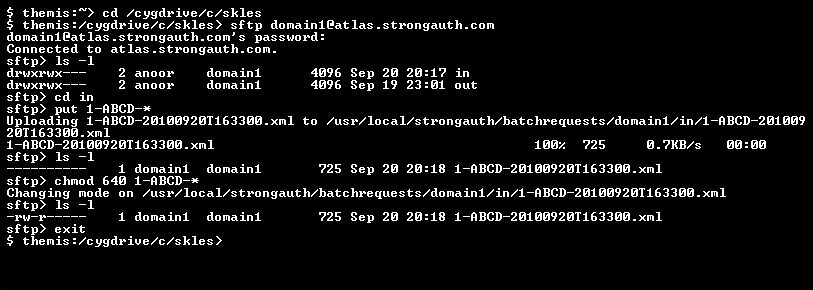To execute the batch operation to the appliance, the XML input file must be transferred to the appliance, into a specific directory. Until the file reaches the specified location, the appliance will be incapable of performing the execution.
Transferring the XML input file requires access to the appliance though one of three supported file-transfer protocols on the appliance: SFTP, NFS, or SMB. This chapter explains how to transfer files using SFTP; NFS, and SMB are beyond the scope of this document, but can be discussed with StrongKey separately, if desired.
Every encryption domain must have a user defined at the Linux operating system layer (generically called Batch-Requester in this document) to be able to transfer the XML files into and out of the appliances. The first encryption domain (DID 1) creates during the installation process, but each additional encryption domain requires that the user be created manually.
The Batch-Requester has a Linux username like “domainN” where “N” is the domain identifier. So, the operating system username for the first encryption domain will be domain1, while that of the second encryption domain will be domain2 and so on.
Each Batch-Requester has a home directory under /usr/local/strongauth/batchrequests where the directory is owned by the strongauth user, but with read-write privileges for the domainN user, too. The home directory for domain1 will be /usr/local/strongauth/batchrequests/domain1.
Under the /usr/local/strongauth/batchrequests/domain1 directory are two subdirectories: in and out. All XML input files must be transferred into the in subdirectory, while all processed XML output files must be transferred from the out subdirectory.
Assuming a domain identifier of 1, using the domain1 credential and the password given by the SAKA Domain Administrator, transfer the file to /usr/local/strongauth/batchrequests/domain1/in. This is shown in the following figure. Once the file is there, the job can be submitted for execution.

